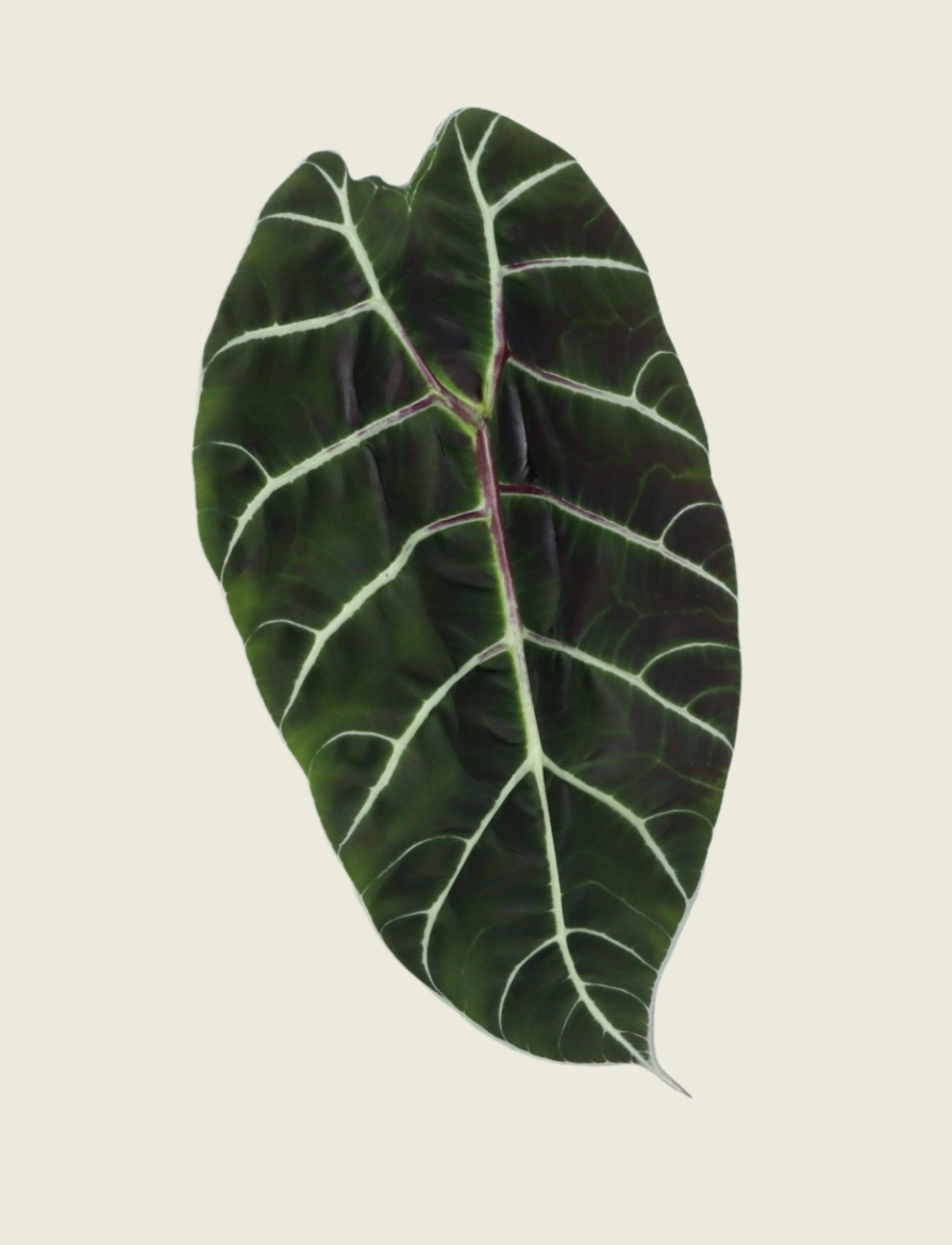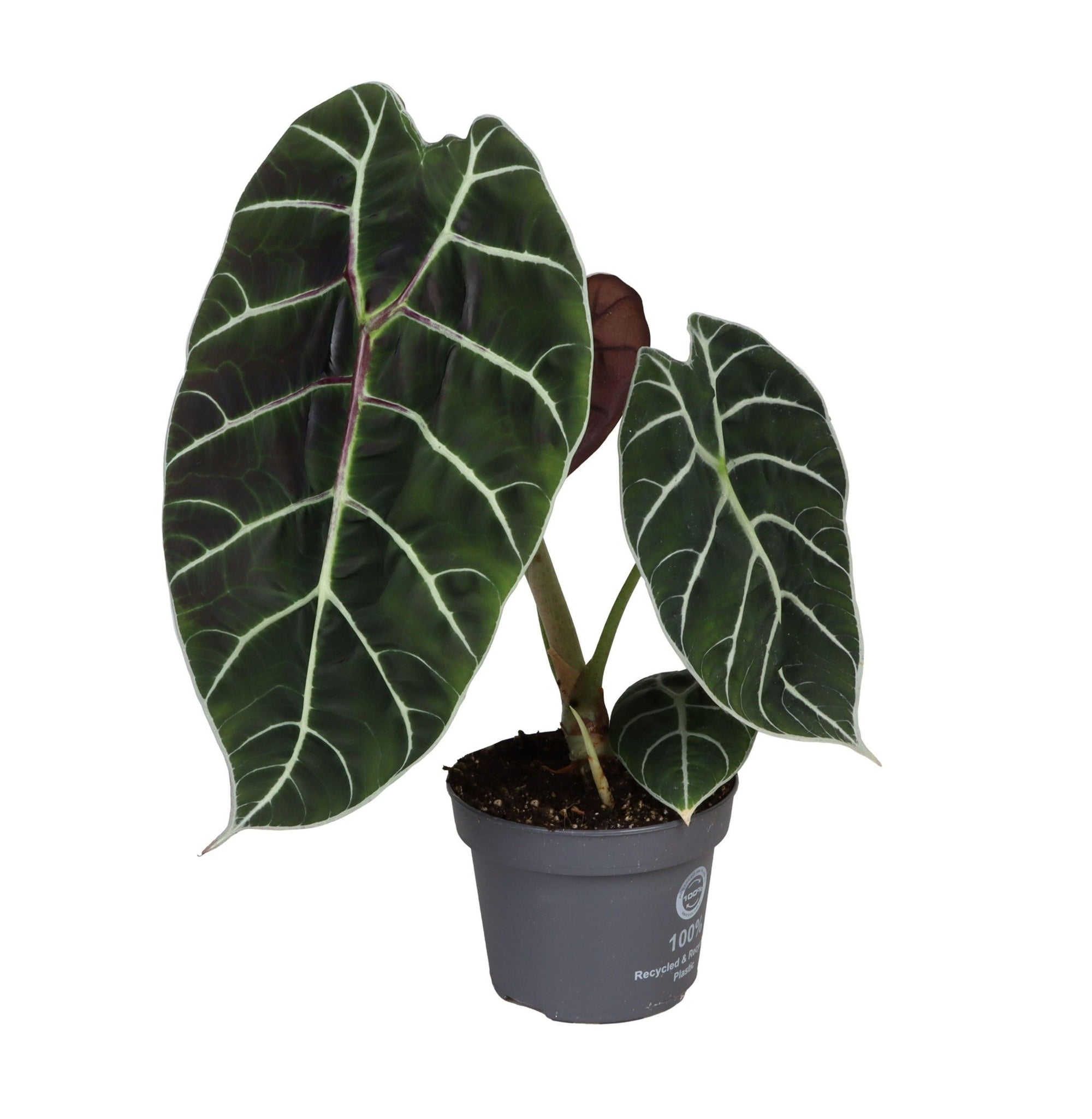
by Plant Circle
Alocasia Care Tips
Curious why your Alocasia keeps struggling? Our founder Monika shares her hard-earned tips for growing these tropical stunners indoors—hint: it’s all about airflow and the right mix.
Across the EU
60€ in Germany | 100€ Europe*
Founded 2017 in Berlin
Across the EU
60€ in Germany | 100€ Europe*
Founded 2017 in Berlin
Across the EU
60€ in Germany | 100€ Europe*
Founded 2017 in Berlin



Alocasia 'Prince of Curup' | Fast EU shipping | Grown with love in the EU | Pet-toxic (handle with care)
Summary: Alocasia ‘Prince of Curup’ stands out with its lush, upright deep green leaves and elegant shape, bringing a bold tropical statement to any indoor space.
Best in bright, indirect light to maintain healthy growth and vibrant foliage. Tolerates medium light but avoid direct sun, which may scorch its large leaves.
Water when the top 2–3 cm of soil feels dry. Keep humidity high (60–80%) by misting regularly, using a humidifier, or placing on a pebble tray, especially in drier European indoor climates.
Use a chunky, well-draining aroid mix with coco coir, perlite, and orchid bark. Repot every 1–2 years in spring to refresh soil and promote healthy root growth.
Toxic to pets and humans if ingested. Keep away from cats, dogs, and small children to prevent irritation or digestive upset.
Produces new leaves frequently in warm seasons. Propagate via tuber division during repotting for new plants. Growth may slow in winter but resumes vigorously in spring.
Fertilise monthly in spring and summer with a balanced liquid fertiliser. Reduce feeding in autumn and winter. Keep away from cold drafts and maintain temperatures above 16°C.
Alocasia ‘Prince of Curup’ is part of the Alocasia genus native to Southeast Asia, known for their sculptural foliage and strong vertical growth. This cultivar’s name references Curup, a region in Indonesia, and its regal look has made it a favourite among collectors seeking statement plants for their European homes.
Add Alocasia ‘Prince of Curup’ to your cart and enjoy fast, secure shipping across Europe and the EU!
release_alert Low Stock - 4 available

Alocasia 'Prince of Curup' Medium
Shipping Information
expand_moreSee our FAQ and Shipping Guarantee for any further Questions!
Very happy with this alocasia, it arrived safely and has no damage, and is very healthy
Beautiful plants and excellent customer service
Beautiful plants and excellent customer service
Beautiful plants and excellent customer service
Beautiful plants and excellent customer service




We have answers!
See answers to some common questions.
Can you ship my order at a later date?
expand_moreWhere are orders dispatched from?
expand_moreWill I receive an invoice for my order?
expand_moreBe the first to know about newly stocked plants and accessories, sales and exclusive offers.
Wie immer top 🫶
Perfekt 👌
These came in perfect shape and are so easy. We put them on rocks and soak them in water once a week. Two weeks now and they still look so fresh. That never happens with our plants.